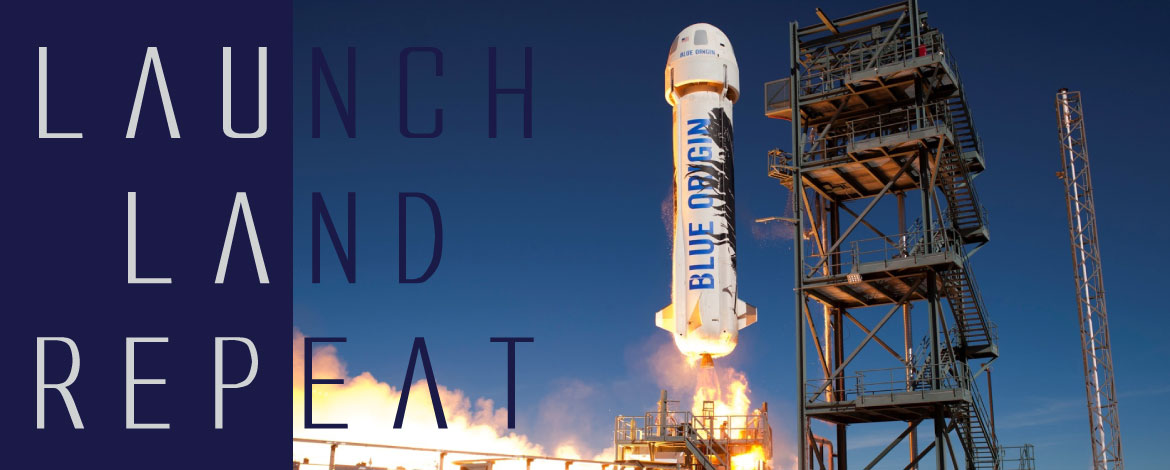Launch, Land, Repeat.
Space has always been something so unobtainable to those of us on the ground: the lucky few, being able to see the Earth and all its beauty being astronauts. Jeff Bezos, founder of Blue Origin, is making the ability to travel into space a possibility in the not so distant future. His vision to send millions of people into to space to live and work is becoming a reality with New Shepard, the first reusable rocket. In November of 2015 New Shepard became it first in its class to successfully fly into space reaching 329,839 feet, before making a historic landing back at its launch site in Van Horn, Texas. It returned through a 119-MPH altitude making a gentle, controlled landing just short 5 feet from the center of the pad. But how does this rocket make such a boundless liftoff and smoother landing? New Shepard’s main way of touching ground is a rocket booster powered landing that permits the craft to tilt freely in any direction so that it will remain horizontal even when the support is tipped. Thus eliminating the classic problem of inverted pendulum. A larger object is easier to balance because of its greater moment of inertia, which made it an obvious choice for Bezos to use to land and operate his rocket. The machine that is the star of these extraordinary feats is its American-made BE-3 liquid hydrogen, liquid oxygen engine. During the liftoff, the BE-3 produces 110,000 pounds of thrust. While ascending, the astronauts will experience 3x the force of gravity as the spacecraft breaks through the atmosphere. As the crew capsule descends and reenters the atmosphere the astronauts will experience 5x the force of gravity before it deploys its three main parachutes. Prior to landing, the BE-3 re-ignites and slows to a 4.4 MPH gentle landing, enabling the vehicle to be reused. Then in January 2016, New Shepard took off once again. Data from their first mission matched their pre-flight predictions very closely, making preparations for re-flight straightforward. All the team had to do for a successful mission was to replace the crew capsule and its parachutes, while also replacing the pyro igniters and including one noteworthy software update. Rather than the craft translating to land at the exact center of the pad, it now initially targets the center. Instead of landing exactly in the middle it lands at a position of convenience on the pad. New Shepard simulated landings show this new strategy increases margin and improving the vehicle’s ability to reject turbulence created by low-altitude winds. With these modifications the craft will soon be ready to take up human pilots and then a whole crew to experience the mysterious beauty that is space. It will be interesting to see where New Shepard will be in the next few months. Remember to always keep your eyes to the sky.
Return to Fresh Greens Main Page
